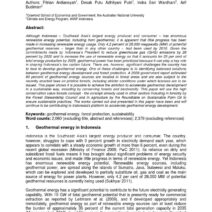Explosions are fascinating phenomena characterized by a rapid release of energy that results in a sudden expansion of gases and a shockwave. To comprehend the mechanics behind explosions, one must delve into the foundational concepts of physics, particularly the conservation of energy, work, and power. These principles not only govern the behavior of explosive reactions but also offer insights into the broader implications for energy transformations in our world.
At the core of the explosion is the concept of energy. Energy exists in various forms: kinetic, potential, thermal, and chemical, among others. Chemical energy, often stored in the bonds of molecules, plays a pivotal role in explosive reactions. When substances are subjected to extreme conditions—such as heat, pressure, or chemical interactions—their inherent chemical energy is released in a controlled (or uncontrolled) manner. During a typical explosion, for instance, the rapid oxidation of explosive materials leads to immense heat and gas production, demonstrating the conversion of chemical energy into thermal and kinetic energy.
To explore the conservation of energy, one must first understand that energy cannot be created or destroyed. It can only be transformed from one form to another. In the context of an explosion, when a chemical explosive decomposes, the stored chemical energy is transformed into mechanical energy, which manifests as a rapidly expanding gas that propels substances outward. The conservation of energy principle is evident here; the total energy before the explosion equals the total energy afterward, although it may manifest in different forms.
The role of power in explosions involves the rate at which energy is transformed or transferred. Power is defined as the amount of energy transferred per unit time, often measured in Watts. During an explosion, the power output can be astonishingly high. As gases expand violently, the energy source fuels high-velocity projectiles and shockwaves that propagate through the surrounding medium, illustrating the dynamic interplay between energy conservation and the rapid geometrical expansion of matter.
A common observation in explosions is the immediacy and intensity of their effect. Whether through fireworks, detonating dynamite, or the combustion of fuel in engines, explosions demand attention due to their dramatic visual and auditory displays. This intensity is largely due to the swift transformation of potential energy into kinetic energy. The potential energy in the tightly packed molecular structure of an explosive material transitions to kinetic energy when the bonds are broken, resulting in rapid gas formation and pressure release. Such transformations can be captivating, as they occur in fractions of a second, creating an exhilarating spectacle.
Despite the inherent danger associated with explosions, they are not merely destructive events; they serve myriad applications across various fields. In construction, controlled explosions are used to demolish buildings or clear land, harnessing the principles of physics for practical purposes. In aerospace, rocket propulsion relies on explosive reactions to thrust vehicles into orbit. Here, one observes the practical applications of explosive energy harnessed by the conservation principles of physics.
Moreover, the physics of explosions raises profound questions about energy utilization and sustainability. The fossil fuels that power explosions in engines release significant amounts of greenhouse gases, contributing to climate change. Thus, understanding the energy transformations involved speaks to larger issues of environmental stewardship and the importance of developing cleaner technologies. Harnessing alternatives, such as electric propulsion systems, emphasizes the ongoing need to transition toward sustainable energy sources that respect the conservation of energy while minimizing harmful output.
Another perspective on the fascination with explosions lies in their representation of chaos and unpredictability in a world otherwise governed by the laws of physics. The abruptness of an explosive event juxtaposes the relative stability of everyday life. Such unpredictability captivates human curiosity and prompts deeper reflections on unpredictability in nature, economics, and human affairs. Explosions serve as metaphors for change that, while often destructive, can herald the birth of new technologies and industries focused on rebuilding and reinvention.
There’s a profound allure in exploring the mechanics of explosions through the lens of conservation laws in physics. When an explosion occurs, one is witnessing the embodiment of energy transformation—a chaotic dance of atoms and molecules that, despite its unpredictability, adheres to the fundamental laws governing our universe. The sheer speed at which chemical energy converts into kinetic energy during an explosion exemplifies not just the power of these processes but also the underlying order that allows us to predict and utilize such reactions for various applications.
In encapsulation, the intersection of explosions and the conservation of energy unveils a rich tapestry of scientific exploration. Understanding the principles of power and performance provides vital insights into our physical world and emphasizes the need for sustainable practices amid a growing concern for climate change. As society continues to wrestle with energy demands and environmental impacts, a deeper comprehension of how various forms of energy interact will be crucial in forging a path toward greener alternatives. The complexity of these interactions serves not just as a scientific inquiry but as a critical reminder of our responsibility towards the planet and its finite resources, ensuring that our fascination with the explosive nature of energy is balanced with a commitment to conservation and sustainability.








